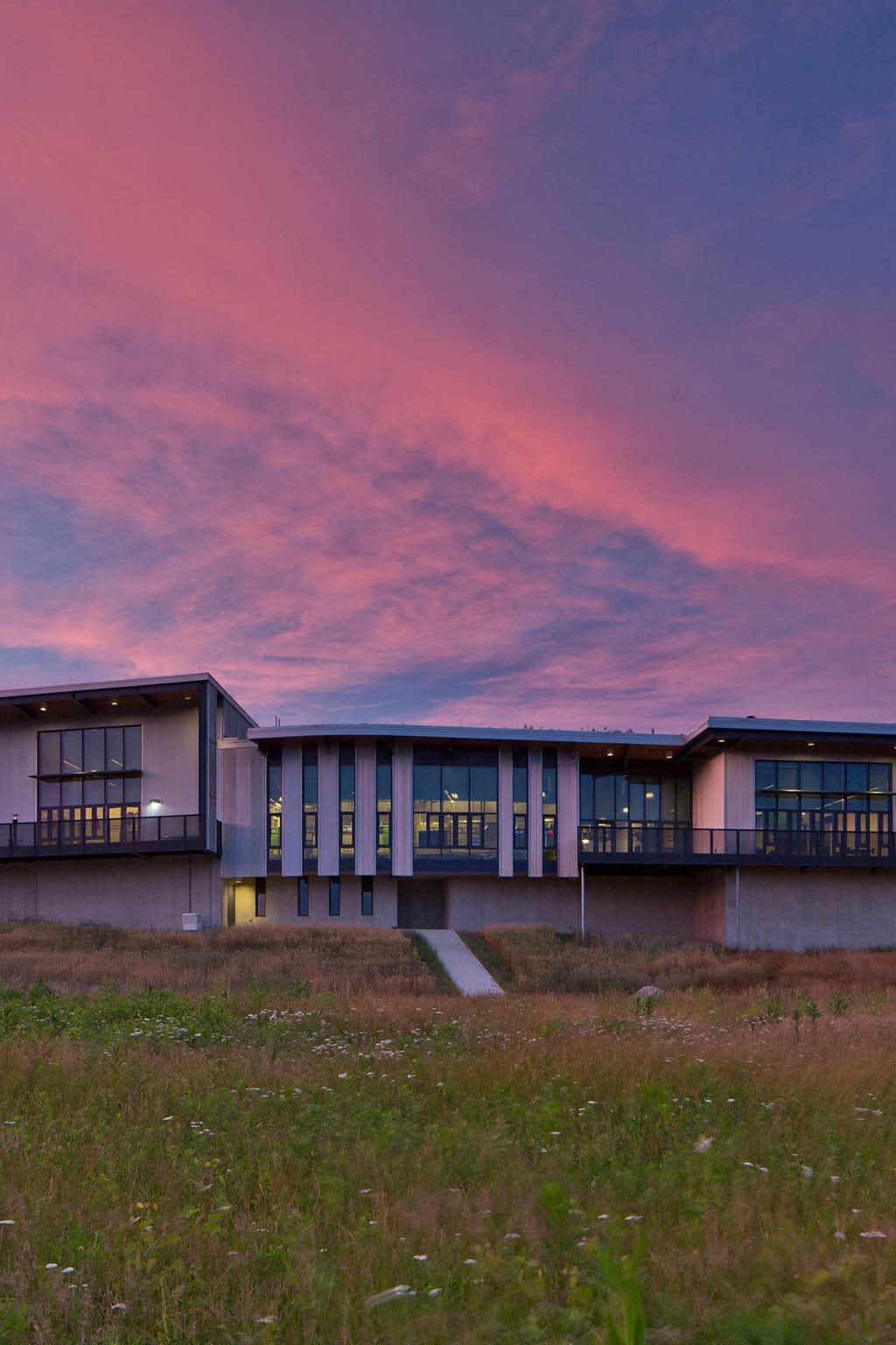A Greener Side of Columbus
Mention Columbus, Ohio, to people and one word will likely pop into their heads: football. The Ohio State Buckeyes are a legendary squad with a longtime stature as a college football dynasty. However, the cultural side of Columbus is equally impressive, as writer Abby Feinknopf discovered when she moved to this Midwest mecca.
The city of Columbus, Ohio, centrally located in Franklin County, is the undeniable home of The Ohio State University and its national championship-winning football team, the Buckeyes. For over a century, Ohio State has been making football history with famous coaches taking them to numerous postseason bowl games and winning eight national championships. Here, names like Woody Hayes, Earle Bruce, John Cooper, Jim Tressel, and Urban Meyer are revered with an almost religious zeal, by saints and sinners, believers and nonbelievers, old and young alike. Ohio State fanaticism is Columbus is the capital of Ohio sometimes gets sidelined.
In moving here after college, this West Virginia native traded in her quiet, green rolling hills for a job in the bustling, flat, concrete grid of Columbus. I have been living here for twenty-five years, and, though swearing up and down that I would never convert, I now consider myself a Buckeye. My weekend wardrobe, once Mountaineer blue and gold, has evolved to Brutus’s scarlet and gray; this non-football follower now frequents The Shoe (Ohio State’s horseshoe- shaped football stadium), can make a mean buckeye (the chocolate-dipped peanut butter confection that is a must-have at our tailgates), and can sing all the songs played by The Ohio State University Marching Band.
Despite this confession, there is an old saying that somehow still stands true for me: “You can take the girl out of the country, but you can’t take the country out of the girl.” Believe it or not, this city, the fifteenth largest in the United States, is more than just a football town; it is a glittering, cultural hub with an often overlooked green oasis that is bound to impress anyone who visits.
My envious relatives back home have called me a spoiled Columbusite because of the endless dining options and cultural offerings the city affords me. We do indeed have a large foodie following and farm-to-table movement that pair nicely with craft breweries, distilleries, artisanal coffee roasters, bakeries, and ice cream shops. Plus, those with an ear for music can be entertained by Columbus’s own opera, symphony, jazz orchestra, and bands of all genres.

© Brad Feinknopf
Let’s not forget the artsy types, either. Those with an artistic eye can saturate themselves in color and all types of art by visiting the newly expanded Columbus Museum of Art (CMoA) and The Ohio State University’s Wexner Center for The Arts galleries. Local art collectors know to frequent the city’s Short North neighborhood for its boutiques and galleries, especially during Columbus’s monthly Gallery Hop. Art advocates and aficionados, alongside the well-dressed fashionistas, tap into the Columbus College of Art & Design (CCAD) to experience their annual student art exhibitions, art sale, and senior runway fashion show occurring on campus, only mere blocks east of the city’s epicenter.
When you are a country girl like me, it is easy to be smitten with the sophistication and scintillating sights and sounds of this city, but it isn’t long before a yearning arises to hear a solitary bird’s song while strolling out in the open, breathing in fresh air with blue skies overhead and green grass underfoot. (I can assure you that I am not the only one.) One mile south of the heart of downtown is the Grange Insurance Audubon Center, where I have come to find Columbus’s ecocraving urbanites convening on their lunch breaks, specifically to absorb some nature before beating it back to their cubicles and offices.
This roughly 18,000-square-foot facility is an award-winning, economical, and stylish model of sustainable design. Constructed with recycled materials, the Audubon Center relies on alternative energy sources to heat and cool itself as it sits atop a reclaimed and renovated brown field, which migrating birds have established as their stop or layover during their long journeys.
The Audubon Center also serves as an educational facility to local schools and the homeschooled communities, offering the use of three classrooms, a library, a nature store, an observation deck with bird feeders and rocking chairs, outdoor habitat areas, rotating exhibits, and a natural playground area for kids. Guests can listen to recordings of migratory birdcalls in the library and can rent the two-hundred-seat multipurpose room for special occasions.
When I am not whistling along with the birds, I am often hiking alongside the bison in another of Columbus’s free gems: the Battelle Darby Creek Metro Park. Located in a Columbus suburb called Galloway, which is approximately twenty minutes west of downtown, sit 7,000 acres of forest, prairies, and wetlands that define Battelle Darby Creek. Stretching for thirteen miles along the Big and Little Darby Creeks, this area is known by the locals as another exceptional, yet often overlooked, opportunity for a flora-and-fauna fix. This particular park has had bison reintroduced to the land, and visitors can get closeup views either from the gravel trails that circumvent the bisons’ two enclosed pastures or from the observation deck of the nature center. Young children can explore the indoor nature exhibits, participate in special programming, and later picnic outdoors, while older naturalists can go fishing, kayaking, biking, and hiking in the area.

© Brad Feinknopf
For those wanting to experience more diverse wildlife while in town, they merely need to drive to the northwest suburb of Powell, Ohio, home to the Columbus Zoo and Aquarium. In 1978, a charismatic man named Jack Hanna took the helm as director of the Columbus Zoo, and, with undeterred enthusiasm and vision, he grew what then was a small zoo into a globally recognized center for conservation, education, and public interaction with wildlife. To date, Hanna has donated $4 million of privately raised funds to assist with seventy conservation projects in thirty different countries. He further proved his commitment to bettering the world for animals by hitting the national talk-show circuit with zoo critters in tow. Various species, endangered or not, got their fifteen minutes of fame when they were featured on television, early morning to late night, where Hanna could maximize his audience and educate it on the animals’ behalf.
Since the 1980s, improvements have been consistently made to the Columbus Zoo and Aquarium, to the point that, today, it cares for 10,000 animals representing 575 species—forty of which are endangered and thirty-three of which remain threatened. This favorite destination spot now houses animals from around the world, which you can view in exhibits like Asia Quest, Heart of Africa, and Australia and the Islands, as well as our own animals at the North America trail.
For those who want a break from the ever- immersive wildlife experiences at the zoo, there are many other fun things to do. For example, kids can ride an old-time carousel in the Shores and Aquarium section and can enjoy thirteen rides—including a log flume and a wooden roller coaster—at Jungle Jack’s Landing. You can also splash around the adjacent 22.7-acre water park, Zoombezi Bay, or hit the links at the nearby 18 hole Safari Golf Club.

© Brad Feinknopf
The Columbus Zoo and Aquarium also operates The Wilds, a conservation centerand safari park just one hour east of Columbus on I-70. It sits nestled in the hills on 9,000 acres of reclaimed and restored strip mining land, which boast grasslands,wetlands, prairies, woodlands, and lakes. Established with the mission of furthering conservation through science, education, and experiences, the initial planning of The Wilds began in the late seventies, finally coming to fruition in 1992, when wild horses called Przewalski’s horses were first released into the park. Today, The Wilds features both well-known animals like rhinos, cheetahs, and giraffes, as well as more exotic, lesser-known creatures, such as African painted dogs, dholes, and scimitar-horned onyx.
Tours began in 1994 and have grown to include daily open-air vehicle safaris and behind-the-scene experiences, called Wildside Tours, where visitors shadow the animal management team and see the center’s inner workings. More recently, zip-line safaris have been added for those guests seeking a more adventurous view, and visitors can also explore the adjacent trails for mountain biking and hiking.
The Wilds has been recognized by the Audubon Society for the area’s importance to birds within the state of Ohio, so bird-watchers now travel from all over the country to visit. Since the design and planting of the Butterfly Habitat, which features an array of flowering plants winding throughout The Wilds’s acreage, butterflies are abundant in the warm weather, allowing guests to enjoy close encounters with them.
Whether you live in town and are seeking a new adventure or you live elsewhere and have a family with varied interests that you are trying to accommodate for a long vacation, simply don some scarlet and gray, grab your hiking boots, and head to Buckeye Country: Columbus, Ohio, where the gridiron is just one of many areas you’ll find greatness.
For more info, visit experiencecolumbus.com.





















